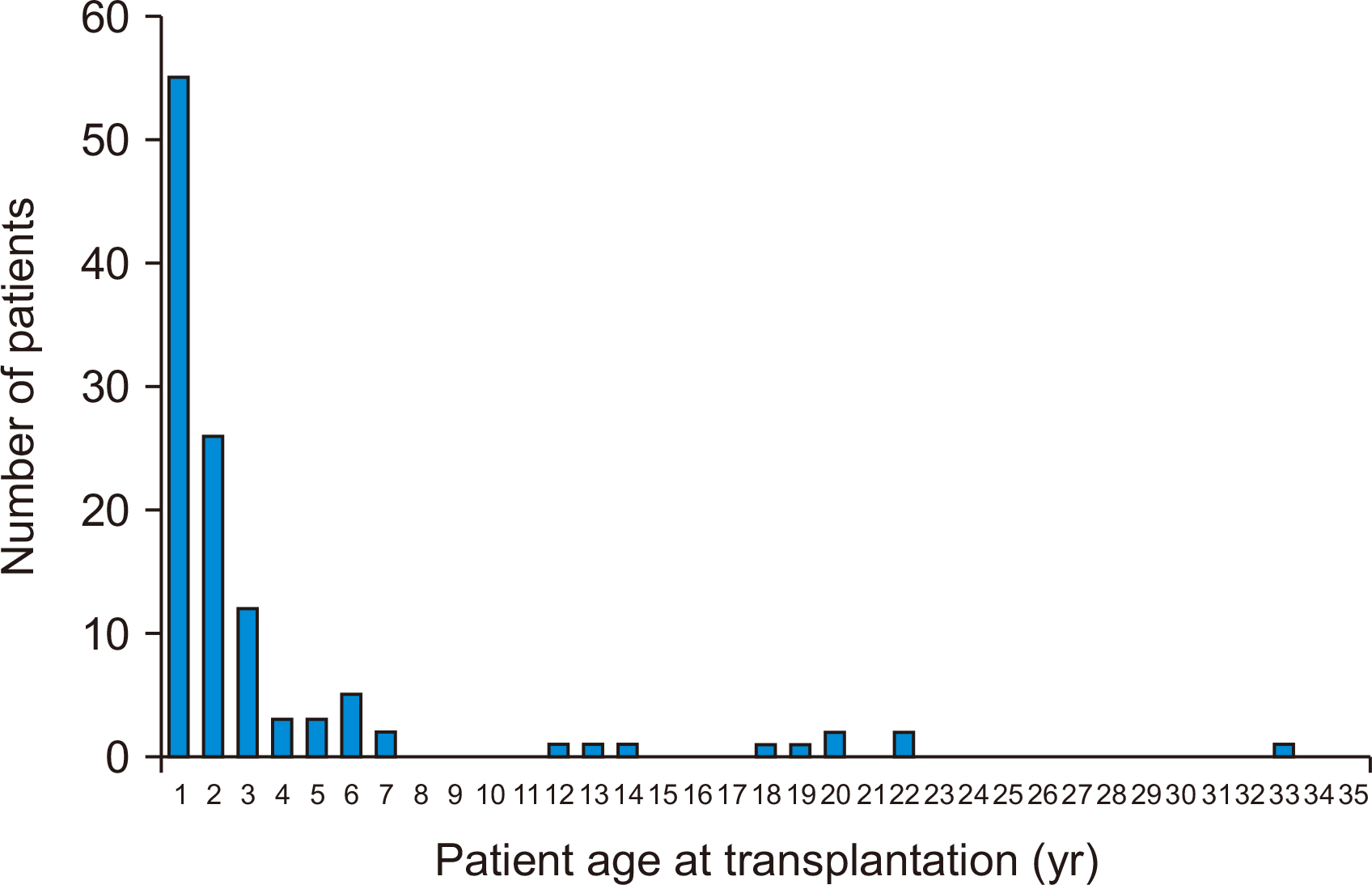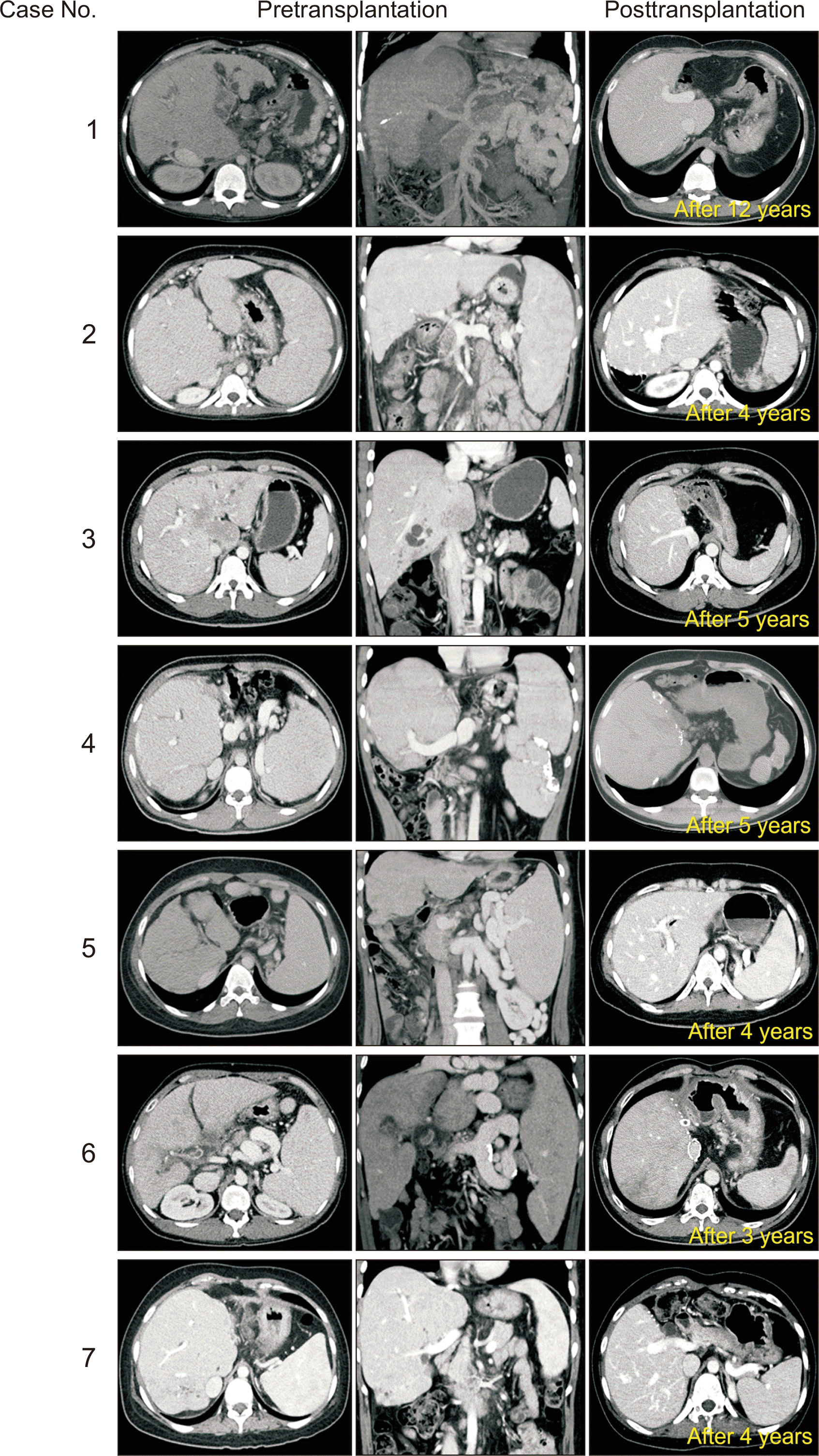1. Livesey E, Cortina Borja M, Sharif K, Alizai N, McClean P, Kelly D, et al. 2009; Epidemiology of biliary atresia in England and Wales (1999-2006). Arch Dis Child Fetal Neonatal Ed. 94:F451–5. DOI:
10.1136/adc.2009.159780. PMID:
19457876.

2. Davenport M, Ong E, Sharif K, Alizai N, McClean P, Hadzic N, et al. 2011; Biliary atresia in England and Wales: results of centralization and new benchmark. J Pediatr Surg. 46:1689–94. DOI:
10.1016/j.jpedsurg.2011.04.013. PMID:
21929975.

3. Bijl EJ, Bharwani KD, Houwen RH, de Man RA. 2013; The long-term outcome of the Kasai operation in patients with biliary atresia: a systematic review. Neth J Med. 71:170–3.
4. Lykavieris P, Chardot C, Sokhn M, Gauthier F, Valayer J, Bernard O. 2005; Outcome in adulthood of biliary atresia: a study of 63 patients who survived for over 20 years with their native liver. Hepatology. 41:366–71. DOI:
10.1002/hep.20547. PMID:
15660386.

5. Hsu EK, Mazariegos GV. 2017; Global lessons in graft type and pediatric liver allocation: a path toward improving outcomes and eliminating wait-list mortality. Liver Transpl. 23:86–95. DOI:
10.1002/lt.24646. PMID:
27706890. PMCID:
PMC6767049.

6. Sasaki H, Tanaka H, Wada M, Kazama T, Nakamura M, Kudo H, et al. 2016; Analysis of the prognostic factors of long-term native liver survival in survivors of biliary atresia. Pediatr Surg Int. 32:839–43. DOI:
10.1007/s00383-016-3934-x. PMID:
27464487.

7. Samyn M, Davenport M, Jain V, Hadzic N, Joshi D, Heneghan M, et al. 2019; Young people with biliary atresia requiring liver transplantation: a distinct population requiring specialist care. Transplantation. 103:e99–107. DOI:
10.1097/TP.0000000000002553. PMID:
30461724.

8. Nio M, Sano N, Ishii T, Sasaki H, Hayashi Y, Ohi R. 2004; Cholangitis as a late complication in long-term survivors after surgery for biliary atresia. J Pediatr Surg. 39:1797–9. DOI:
10.1016/j.jpedsurg.2004.08.021. PMID:
15616933.

9. Kyoden Y, Tamura S, Sugawara Y, Yamashiki N, Matsui Y, Togashi J, et al. 2008; Outcome of living donor liver transplantation for post-Kasai biliary atresia in adults. Liver Transpl. 14:186–92. DOI:
10.1002/lt.21344. PMID:
18236393.

10. Kumagi T, Drenth JP, Guttman O, Ng V, Lilly L, Therapondos G, et al. 2012; Biliary atresia and survival into adulthood without transplantation: a collaborative multicentre clinic review. Liver Int. 32:510–8. DOI:
10.1111/j.1478-3231.2011.02668.x. PMID:
22098694.

11. Uchida Y, Kasahara M, Egawa H, Takada Y, Ogawa K, Ogura Y, et al. 2006; Long-term outcome of adult-to-adult living donor liver transplantation for post-Kasai biliary atresia. Am J Transplant. 6:2443–8. DOI:
10.1111/j.1600-6143.2006.01487.x. PMID:
16889600.

12. Kang SH, Hwang S, Ahn CS, Kim KH, Moon DB, Ha TY, et al. 2020; Changes in the indications for living donor liver transplantation: single-institution experience of 3,145 cases over 10 years. Korean J Transplant. 34:47–54.
13. Ha H, Hong J, Kim I, Lee S, Lee A, Ha T, et al. 2019; Deceased donor liver transplantation under the Korean model for end-stage liver disease score-based liver allocation system: 2-year allocation results at a high-volume transplantation center. Korean J Transplant. 33:112–117. DOI:
10.4285/jkstn.2019.33.4.112.

14. Namgoong J, Hwang S, Kim D, Ha T, Song G, Jung D, et al. 2020; Whole liver deceased donor liver transplantation for pediatric recipients: single-center experience for 20 years. Korean J Transplant. 34:249–56. DOI:
10.4285/kjt.20.0036.

15. Bae SK, Akamatsu N, Togashi J, Ichida A, Kawahara T, Maki H, et al. 2019; Hepatitis B virus recurrence after living donor liver transplantation of anti-HBc-positive grafts: a 22-year experience at a single center. Biosci Trends. 13:448–55. DOI:
10.5582/bst.2019.01283. PMID:
31666441.

16. Cholongitas E, Papatheodoridis GV, Burroughs AK. 2010; Liver grafts from anti-hepatitis B core positive donors: a systematic review. J Hepatol. 52:272–9. DOI:
10.1016/j.jhep.2009.11.009. PMID:
20034693.

17. Wong TC, Fung JY, Cui TY, Lam AH, Dai JW, Chan AC, et al. 2019; Liver transplantation using hepatitis B core positive grafts with antiviral monotherapy prophylaxis. J Hepatol. 70:1114–22. DOI:
10.1016/j.jhep.2019.03.003. PMID:
30871981.

18. Suehiro T, Shimada M, Kishikawa K, Shimura T, Soejima Y, Yoshizumi T, et al. 2005; Prevention of hepatitis B virus infection from hepatitis B core antibody-positive donor graft using hepatitis B immune globulin and lamivudine in living donor liver transplantation. Liver Int. 25:1169–74. DOI:
10.1111/j.1478-3231.2005.01165.x. PMID:
16343068.





 PDF
PDF Citation
Citation Print
Print





 XML Download
XML Download